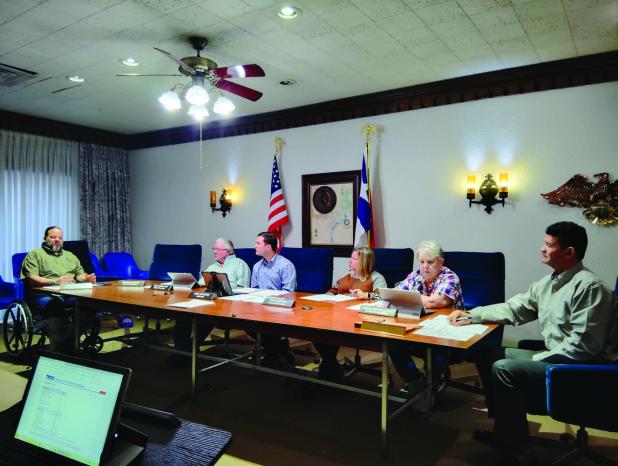
Council reviews water treatment plant options
The engineering-design firm hired by the Olney City Council to explore costs and feasibility for rebuilding the century-old water treatment plant says it will cost approximately $5-7 million to upgrade the plant for another 50 years, City Administrator Simon Dwyer told the Council at its Feb. 24 meeting.
The City has had $14 million in revenue bond proceeds sitting in its bank account since 2022 after bids for a new water treatment plant came in millions of dollars higher than expected. The engineering firm, Jacob | Martin of Abilene, also estimated that the City could build a new plant using new membrane technology that would yield 25 percent more water than the current plant for $6-10 million. A new membrane plant would be placed beside the old plant and probably would take longer to be approved by the Texas Commission on Environmental Quality, Mr. Dwyer said.
Membrane technology, which includes reverse osmosis technology long used to filter brackish water in North and West Texas, has emerged as a favorite choice for reclaiming water from different wastewater streams for re-use, according to the National Institutes of Health.
A membrane system, which could use newer technology such as ultrafiltration, micro-filtration, and nano-filtration, would work well with Olney’s sometimes particle-filled water, Public Works director Michael Jacoba said.
“When the water comes in, it goes through little filters [in membrane plants],” he said. “Our plant doesn’t do it to that degree. It may be more expensive to run because you have to replace the filters more often.”
Olney’s water treatment plant now produces 1.72 million gallons of water per day. A membrane system could produce 2 million gallons per day, Mr. Dwyer said.
Councilmember Thea
Sullivan asked whether the City can use the remaining funds to upgrade its aging water pipes, which break at an average of nine times per month, city reports show.
“We would have quite a bit left over,” she said. “It would be nice to do this.”
Mr. Dwyer said he consulted with legal counsel for Government Capital Corp, which helped the City issue the revenue bonds, and learned that the language governing what the proceeds can be used for can be altered because it was not approved by voters.
If the Council decides to go with the membrane plant option, the City could seek additional funding from the U.S. Department of Agriculture for the project, he said. The City qualifies for USDA funding because Olney’s average income is below the state median income, he said.
Jacob | Martin will present the city with an official bid at a March 6 meeting, after which the Council can vote on how to proceed, Mr. Dwyer said.
“Once we get the final numbers we can decide whether to rehab or build a new membrane plant,” Mayor Rue Rogers said. “This is exciting because we’re getting close.”
